How to Have a Side of Beef Processed
Buying a side of beef is a lot of beef. So, why do people do it? And what questions should you ask before purchasing so that you're sure it's worth it. Here's everything you need to know.
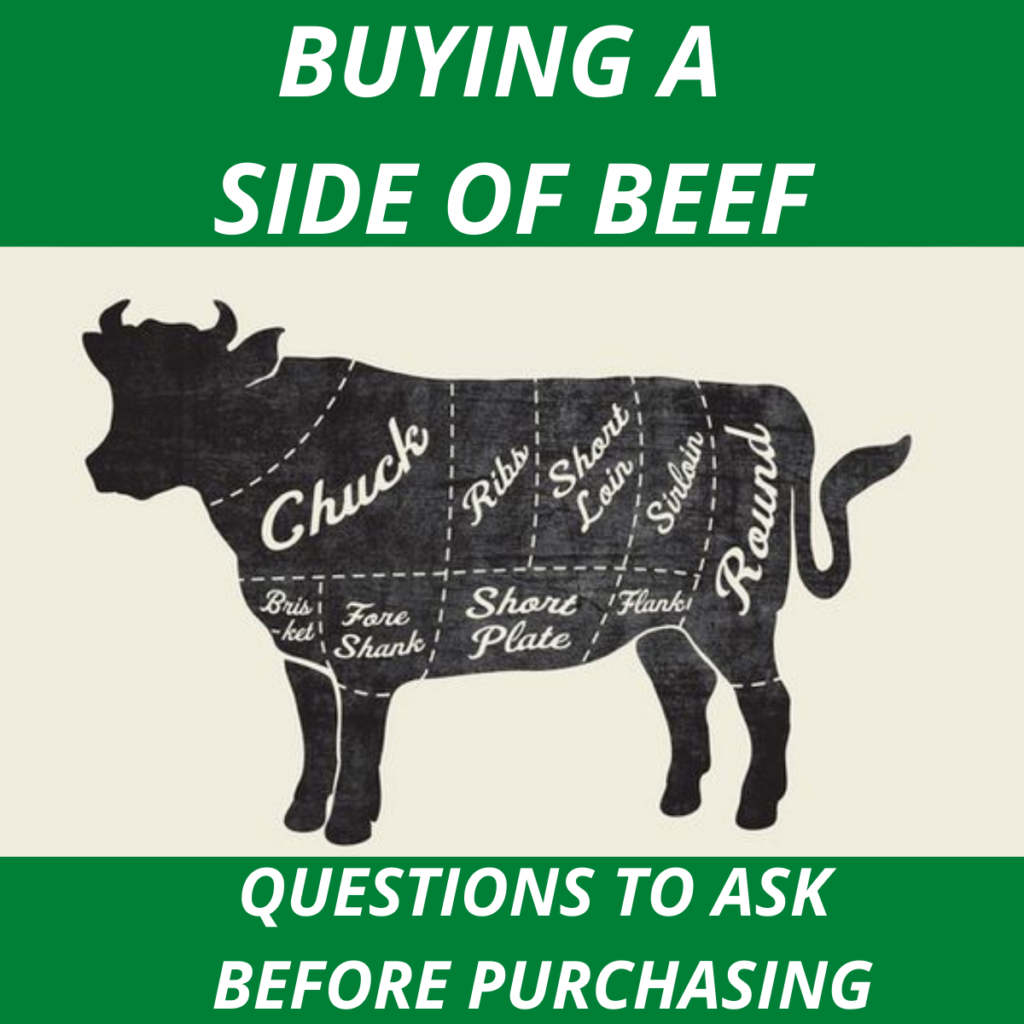
What is a side of beef (half beef)?
A side of beef is the cuts from one side of a cow. This is also known as a "half beef."
How much beef comes with a side of beef?
With a side of beef, you will get approximately 220 pounds of beef. Ground beef accounts for 100 pounds, and the remainder is from cuts like steaks, roasts, ribs, brisket, and soup bones.
Please note, that these are approximates. All cattle are different. Some may weigh more or less when butchered, which means that there may be more or less beef on them. The numbers given are what we typically see on our farm.
What cuts come with a side of beef?
- Filet steak
- Ribeye steak
- Sirloin steak
- Strip steak
- Skirt steak
- Flank steak
- Brisket
- Chuck roast
- Sirloin roast
- Arm roast
- Ground beef
- Ribs
- Stew meat
- Kabob meat
- Soup bones
- Organ meat (liver, heart, etc., if desired)
Video: Quarter beef in our refrigerator
How many steaks do you get with a side of beef?
The number of steaks that come with a half beef varies based on how the beef is cut. For example, steaks cut into a 1-inch thickness, result in approximately 12-14 sirloin steaks with a side. Steaks cut into 1 ½ -2 inches thick, result in about 6-7 sirloin steaks with a side of beef. The overall weight of beef is the same, but the quantity is significantly different based upon how the beef is cut.
It's also important to remember that some sections of beef can be cut in multiple ways, and you will have to choose how you want it cut.
The best example of this is with a T-bone steak, which is a strip steak on one side and a tenderloin on the other. If you decide you want T-bone staks, you won't get tenderloin and strip steaks. If you decide you want tenderloin and strip steaks, you won't get T-bone steaks. Why? Because it's the same beef cut differently and there is a limited amount of beef on an animal.
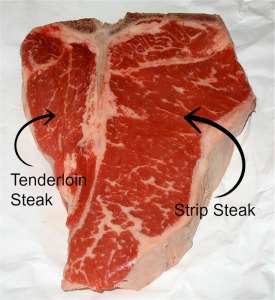
Can the entire half beef be steak?
No. There is a limited amount of beef on a steer. It's not all steak. In fact, the majority of the animal is ground beef.
The USDA divides a cow into eight regions, known as the primal cuts of beef:
- Chuck
- Rib
- Loin
- Round
- Flank
- Short Plate
- Brisket
- Shank
Numerous different cuts can come from each of these sections.
When purchasing beef at a store, they butcher numerous animals and they do determine how to cut each based on supply and demand. For example, at the grocery store "round" sold as ground beef, round steak, eye of round, tip steak, tip roast, top round and bottom round roasts. When you purchase a side of beef, you wouldn't receive all of these cuts because there is a limited amount of beef on each animal.
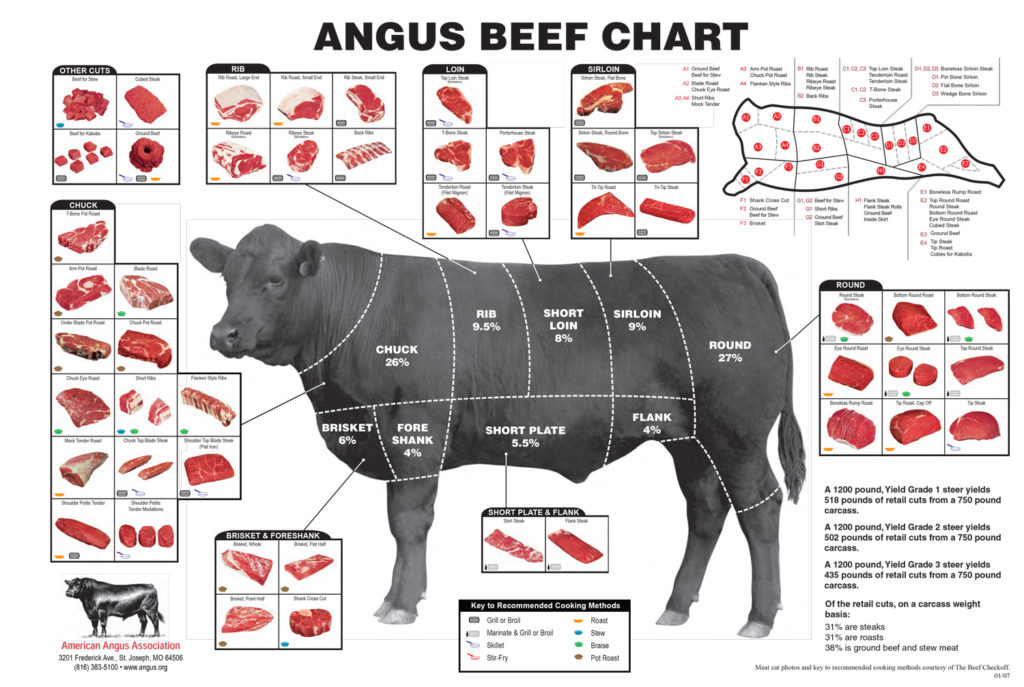
Is it worth buying a side of beef?
Yes! The benefit of buying a cow is that you will save money and get higher quality beef.
Every year, we compare the price of beef from our farm to local St. Louis grocery stores. Depending on where you usually shop for groceries, you can save about $1,900 a year on beef by purchasing beef in bulk.
This chart provides how much you would save on a whole beef, and we walk through this chart in greater detail in this post about how to save on groceries.
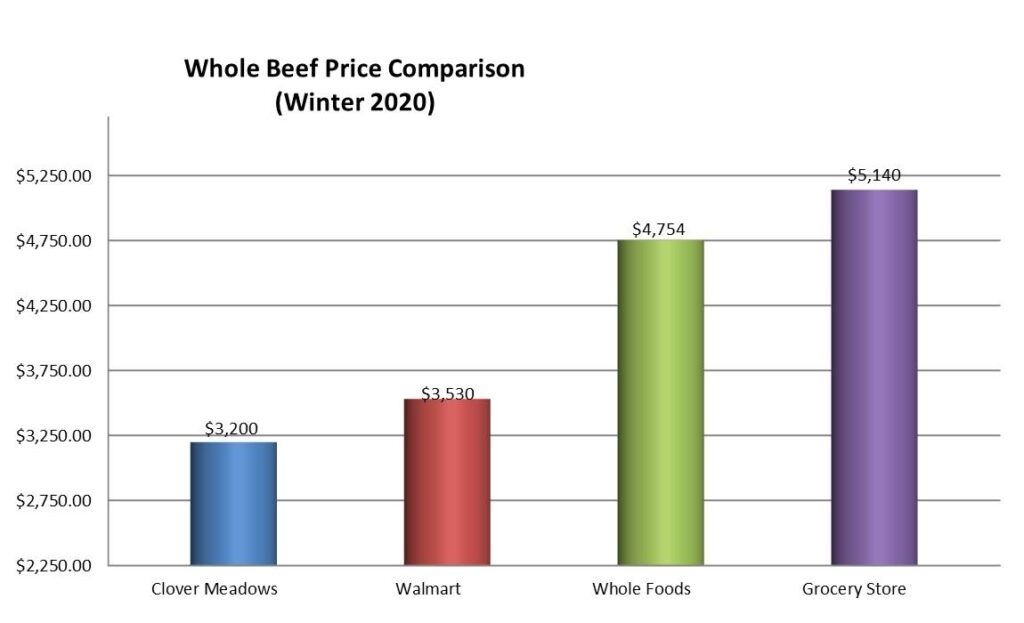
Please note, every farm and beef processor prices beef differently. You will need to do your own math on determining the price per pound if you're not in the St. Louis area and can't order from our farm.
Do I need a stand-alone freezer?
Yes. If you're buying a side of beef, you'll need a freezer. The rule of thumb is 1 cubic foot of freezer space for every 30-35 lbs of cut and wrapped meat.
You can usually get a good deal at a warehouse store. We have both chest and upright freezers at our house and we like both of them.
A new 9 cubic foot freezer has a one-time cost of about $400-$450, and its yearly running cost will be approximately $38. So, as long as you continue to use your freezer in the future, buying one is a good investment.
Be sure that your freezer has a lock and key, or you can also purchase an aftermarket lock. A lock is very important. Without a lock, the freezer door can become slightly ajar and the beef will be ruined. Second, a physical lock protects little ones. Children have climbed into freezers and suffocated.
How much does a side of beef cost?
This is a great question. There are two basic ways that farmers sell beef:
- Customer works with a farmer who raises beef AND has beef processed on the customer's behalf (i.e., all-inclusive pricing): On our farm, our pricing includes all beef, USDA processing fees and free delivery to a specific pick-up locations in the St. Louis area. We work with the USDA-approved beef processor directly so that our customers don't have to. With this method, our customers know exactly how much they will pay up front and we guarantee a certain amount of beef. There are no hidden fees or surprises.
- Customer works with a farmer, and the customer cordinates their own beef processing. The customer writes two checks — one to the farmer and one to the beef processor: When you purchase beef directly from a farmer and you're responsible to find your own beef processor, plan to ask lots of questions and do lots of math to make sure you know what you're buying. You'll also need to learn some agriculture-lingo, like live-weight and hang-weight (see below).
How to buy a side of beef?
First, you'll need to find a farmer to purchase from. If you're in the St. Louis area, we hope you reach out to us and we are happy to answer any questions you have.
If you're not in the St. Louis area, a great way to find a farmer is to contact your local Extension office or USDA office and ask for a list of those in the area that sell beef directly.
Once you find a farmer, contact them and ask questions about their cattle and butchering process. As you do this, please keep in mind that agriculture has its own lingo and you may have to ask lots of questions to fully understand what you're buying. Most farmers will be very patient in answering any questions you have because we take pride in raising the food people eat.
We've found that one of the best questions is, "If I were to buy your beef at the store, what would the label say?" With this question, you'll learn things like if the beef is "grass fed", "all nautral", "organic", the expected lean ratio (i.e., 90/10, 85/15), etc.
Also, it's important to note that the packaging on most farm-fresh beef is very plain. The reason for this is because labeling is very regulated by the USDA. Anything "extra" on the label like "grass fed" or a lean ratio, requires additional USDA certification and significant cost to the farmer.
Beef packaging
Most beef processors will give you an option between paper, shrink wrapped, or vacuum sealing packaging. We recommend vacuum sealing because it will keep the beef fresh for longer. Vacuum sealing does cost a little more, but it's worth it so your beef doesn't get freezer burn. Vacuum sealed beef will last approximately 1-year in the freezer.
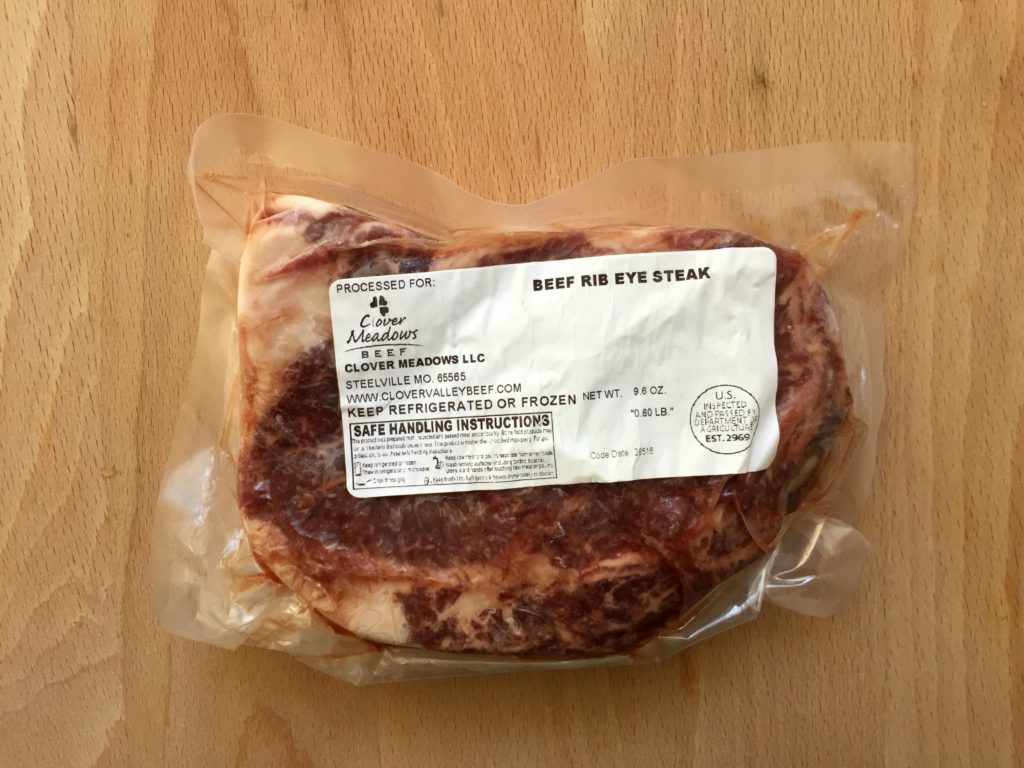
What's a cut list?
Once the animal is at the processor, you may or may not need to think about filling out a cut list.
On our farm, we have a standard cut list we use for all quarter and half beef orders. For whole beef orders, customers fill out a cust-list and can customize how they want their beef cut.
Depending on the region of the country and the farmer, you may be asked to fill out a cut list for a half beef. If so, it can be a little intimidating, but don't panic. The farmer and butcher should be able to assist you so it only takes a few minutes to complete.
Cut list recommendations
As you fill out a cut list, remember, a steer is not all steak. Ground beef makes up the majority of a steer.
- Steaks: We like cutting steaks into 1-inch thickness. If you decide you want a thicker steak and your beef processor allows it, keep in mind you'll be getting fewer steaks. For example, if you order a quarter beef, you would usually get approximately 6-7 sirloin steaks if they're 1-inch thick. If you have them cut to 1 ½ -2 inches thick, you may only get 3-4 steaks. It's the same weight of beef, but how you have it cut makes a big difference on the quantity of steaks.
- Roasts: Arm, Chuck, Round, Rump cut into 3-4 pound roasts.
- Ground Beef: Packaged in 1 pound packages
- Short Ribs: You could have this ground into hamburger, but we don't recommend it. Short ribs are awesome.
- Stew Meat and/or Kabob Meat: These cuts are typically the trimmings from the steaks.
- Brisket: You could have this ground into ground beef, but please don't. Brisket is so good and there are lots of ways to cook brisket.
- Soup Bones: We love soup bones. They make the best bone broth. We highly recommend them.
- Organ meat: This is up to you, but we recommend it, especially liver.
What is hanging weight?
- Live weight (or "on the hoof") is how much a cow weighs when it's alive and walking around. This includes meat, bones, blood, etc.
- Hanging weight (or "on the rail") is after the animal is slaughtered and all the unusable parts are removed (like head, skin and hooves), Hanging weight includes bones and meat. Typically, the hanging weight is about 60% of the live weight.
- Boxed weight (or packaged weight) is the weight of all the packages of individual cuts of meat that you will put in your freezer This is typically about 60 percent of hanging weight.
So, what does this mean in plain-terms? If you're told it's $3.75 per pound hanging weight, then expect to pay approximately $6.25 per pound ($3.75 / 0.60) PLUS the butchering fee, which is usually about $600.00 for the entire cow (you'll split this fee if you're sharing with another family).
Payment, deposit and beef pick-up
How you pay for the beef and pick it up will vary by farm. This is a question you'll want to discuss with your farmer prior to ordering.
On our farm, we provide free delivery to specific locations in the St. Louis area, or home delivery for a small fee. All beef is frozen and boxed, and coolers aren't needed. We require full payment in advance, because we aren't going to butcher an animal that shouldn't be butchered.
On other farms, the customer is often required to go to the beef processor to pick-up their beef. If this is the case, be sure to ask if the beef will be frozen and boxed. If it's not, be sure to bring along coolers to keep the beef cool until you can get it in your freezer.
One more thing
Do you want to learn more about our farm and how we raise beef? Join our weekly e-newsletterwhere we share farm happenings, recipes and beef availability. Or, we have an entire ebook about beef that goes through purchasing and preparing beef from a cattle farmers perspective.
And here are a few other blog posts you may like:
- What everybody ought to know about beef cuts
- Buying a Cow. How Much Beef Is It?
- Is It Done Yet? The Best Meat Thermometer
- How We Raise Our Grass Fed Beef
Source: https://www.clovermeadowsbeef.com/side-of-beef/
0 Response to "How to Have a Side of Beef Processed"
Post a Comment